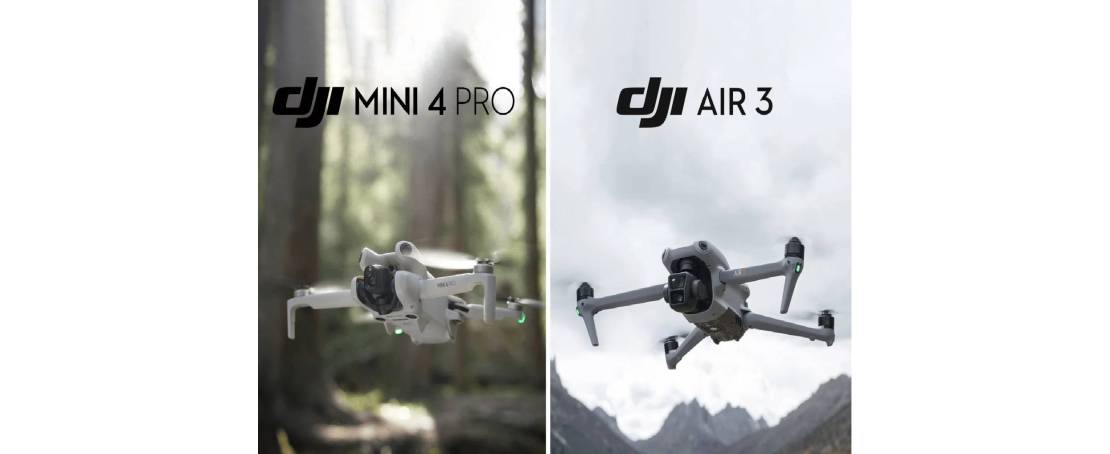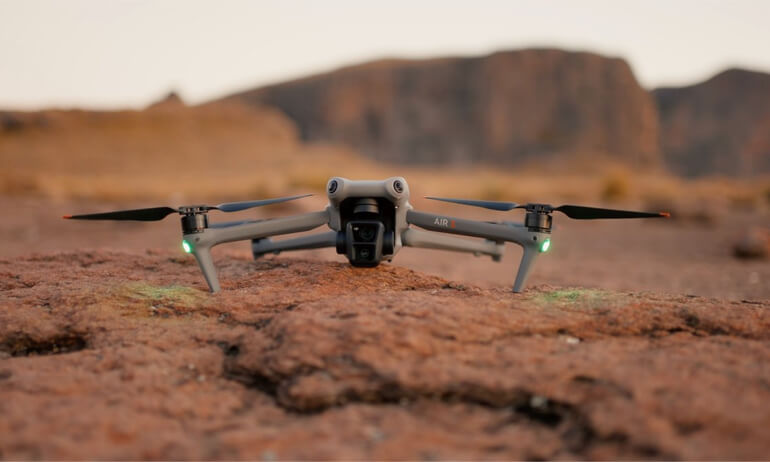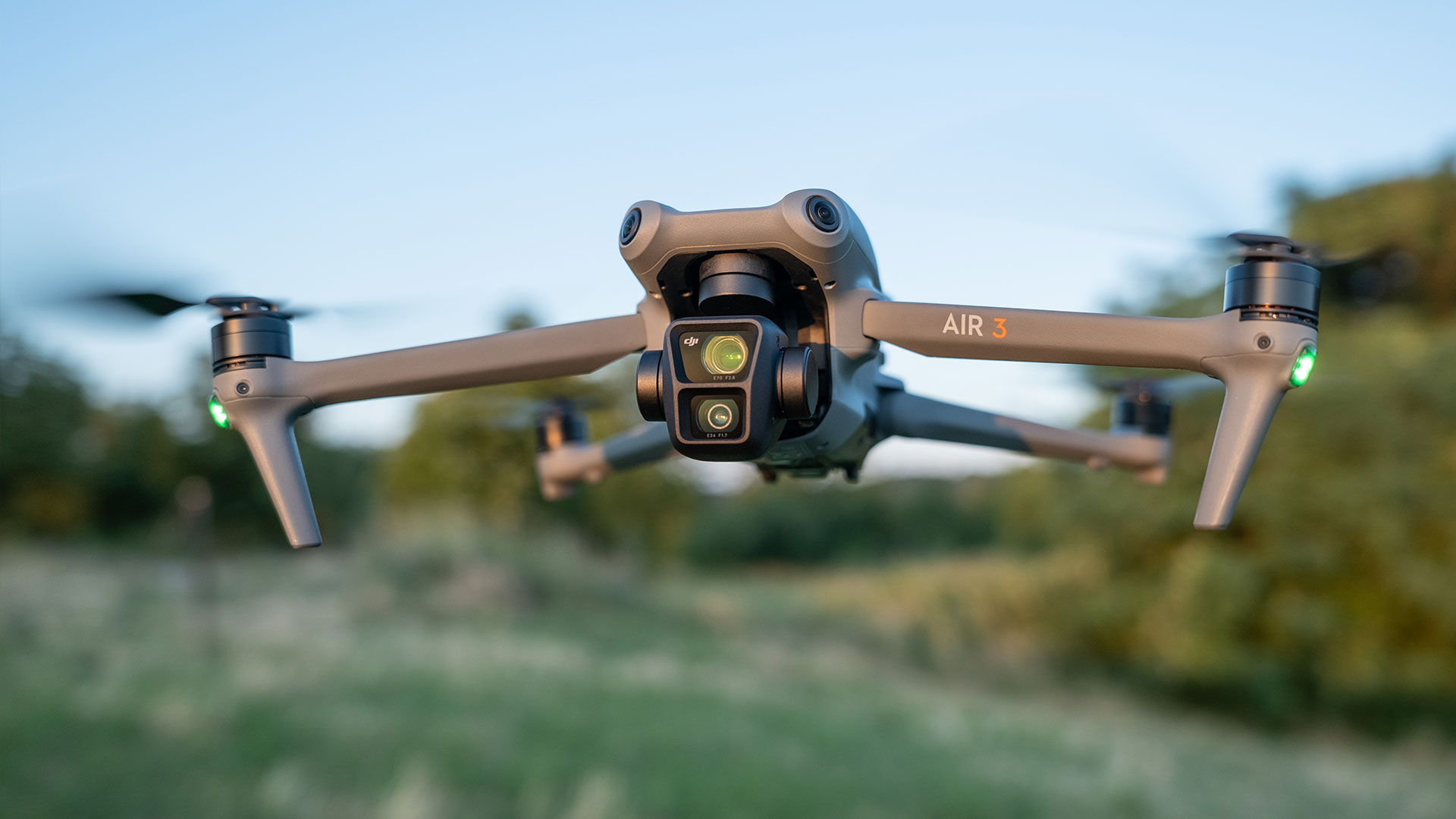DJI Air 3 vs DJI Mini 4 Pro: Useful Drone Comparison

DJI Air 3 vs. DJI Mini 4 Pro: A Comprehensive Comparison
The DJI Mini 4 Pro and Air 3 are two impressive drones in DJI's lineup, each offering unique features and capabilities. This article delves into the key features, performance, and practical applications of both drones, helping you determine which one best suits your needs.

Camera Capabilities
DJI Mini 4 Pro:
The Mini 4 Pro features a 1/1.3-inch sensor with a 48MP resolution, capable of capturing 4K video at 60fps and slow-motion video at 100fps. The camera supports HDR video and a new night mode, delivering exceptional image quality in various lighting conditions. The ability to rotate the camera for true vertical shooting makes it ideal for creating social media content.
DJI Air 3:
The Air 3 stands out with its dual-camera system, featuring a wide-angle camera and a medium telephoto camera. The main camera uses a 1-inch CMOS sensor, capable of capturing 20MP stills and 5.4K video at 30fps. The medium telephoto camera provides more versatile shooting options, allowing for closer shots without compromising image quality.
Flight Performance
DJI Mini 4 Pro:
The Mini 4 Pro's omnidirectional obstacle sensing uses multiple sensors to detect obstacles in all directions. This system, combined with Advanced Pilot Assistance Systems (APAS), enhances flight safety and allows for complex maneuvers such as flying through dense environments and indoors.
DJI Air 3:
The Air 3 also features omnidirectional obstacle sensing, using advanced sensors to detect obstacles in all directions. This, combined with APAS 5.0, ensures a safer flight experience by autonomously avoiding obstacles during flight.

Intelligent Flight Modes
DJI Mini 4 Pro:
The Mini 4 Pro introduces advanced features like ActiveTrack 360°, Waypoints, and Cruise Control. ActiveTrack 360° allows the drone to follow subjects with enhanced precision, while Waypoints enable pre-programmed flight paths for cinematic shots. Cruise Control helps maintain a steady flight direction, making long maneuvers easier to execute.
DJI Air 3:
The Air 3 includes advanced flight modes like SmartPhoto, Hyperlapse, and FocusTrack. FocusTrack combines ActiveTrack, Point of Interest, and Spotlight modes, allowing the drone to track and keep the subject in frame automatically. Hyperlapse enables time-lapse videos in 4K resolution, adding a dynamic element to your footage.
Connectivity and Control
DJI Mini 4 Pro:
The Mini 4 Pro uses the Ocusync 4 transmission system, providing a more robust and longer-range connection compared to its predecessors. It supports two controller options: the DJI RC-N2 and the DJI RC 2, the latter featuring a built-in screen for a more seamless flying experience.
DJI Air 3:
The O4 transmission system ensures robust and long-range video transmission, offering live view quality at 1080p/60fps. Operating on multiple frequencies (2.4 GHz, 5.1 GHz, and 5.8 GHz), the drone can adapt to different environments, providing a maximum transmission distance of up to 20 km under optimal conditions. It supports high-speed downloads and low-latency transmission, ensuring real-time control and high-quality video feeds.
Design and Portability
DJI Mini 4 Pro:
The Mini 4 Pro’s compact design, weighing only 249 grams, ensures it falls within less stringent regulations in many countries. This makes it an excellent choice for travelers and those new to drone flying. Its foldable arms and forward-mounted camera gimbal enhance its portability and ease of use.
DJI Air 3:
The Air 3's design is slightly larger and heavier than the Mini 4 Pro, but it remains portable with its foldable design. The added weight contributes to improved stability in windy conditions, making it a reliable option for professional applications.

Flight Time and Battery Life Comparison
DJI Mini 4 Pro:
Standard Intelligent Flight Battery: Up to 34 minutes.
Intelligent Flight Battery Plus: Up to 45 minutes (increases weight beyond 250 grams).
DJI Air 3:
Intelligent Flight Battery: Up to 46 minutes.
Intelligent Flight Battery Plus: Extended flight times with added stability and longer operational range.
Practical Applications and Use Cases
Content Creation
DJI Mini 4 Pro:
Both drones are excellent for content creation, but the Mini 4 Pro’s vertical shooting capability makes it especially suitable for social media platforms.
DJI Air 3:
The Air 3’s dual-camera system provides more versatility for creative shots, making it ideal for professional photographers and videographers.
Professional Use
DJI Mini 4 Pro:
The Mini 4 Pro’s lightweight and compact design make it an ideal travel companion.
DJI Air 3:
The Air 3 is more suited for professional use due to its enhanced flight time, robust build, and versatile camera system. It’s perfect for detailed aerial mapping, inspection services, and professional film production.

Travel and Exploration
DJI Mini 4 Pro:
Its easy-to-use features and intelligent flight modes cater to both beginners and seasoned travelers looking to capture stunning aerial views.
DJI Air 3:
Its larger size and enhanced stability make it a reliable option for more demanding conditions.
Conclusion
Both the DJI Mini 4 Pro and Air 3 are outstanding drones, each catering to different needs and preferences. The Mini 4 Pro is perfect for those seeking a lightweight, portable drone with advanced camera capabilities and intelligent flight modes. Its ability to shoot in true vertical mode makes it especially attractive for social media influencers and content creators who need quick and easy ways to generate high-quality footage. The Mini 4 Pro’s compact and lightweight design also means it is less restricted by regulations, making it a convenient choice for travel and everyday use.
In contrast, the Air 3 offers more professional features, including a dual-camera system that provides versatile shooting options, longer flight times, and enhanced stability. These features make the Air 3 ideal for serious drone enthusiasts and professionals who require reliable performance for complex tasks such as aerial mapping, inspections, and high-end videography. The robust build and extended battery life ensure that the Air 3 can handle more demanding conditions and longer sessions without needing frequent recharges or experiencing performance drops.
Ultimately, the choice between the DJI Mini 4 Pro and Air 3 depends on your specific needs and use cases. If you prioritize portability, ease of use, and quick deployment for casual and social media content creation, the Mini 4 Pro is the best option. However, if you need a drone with advanced capabilities for professional applications, longer flight endurance, and superior image quality, the Air 3 is the clear winner. Both drones represent the pinnacle of DJI’s technology and innovation, ensuring that whichever you choose, you’ll be equipped with a powerful tool to capture stunning aerial footage.


_e3adad5245914b26b3f6df6cb5ecc1cc.jpg)


